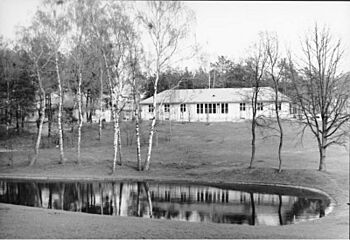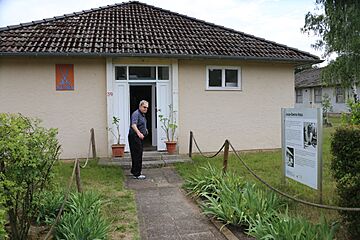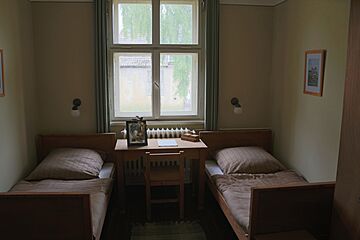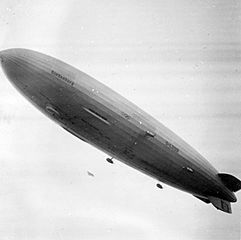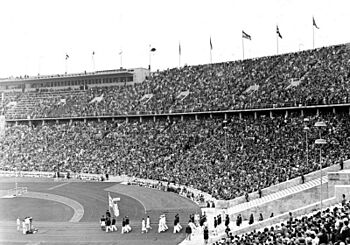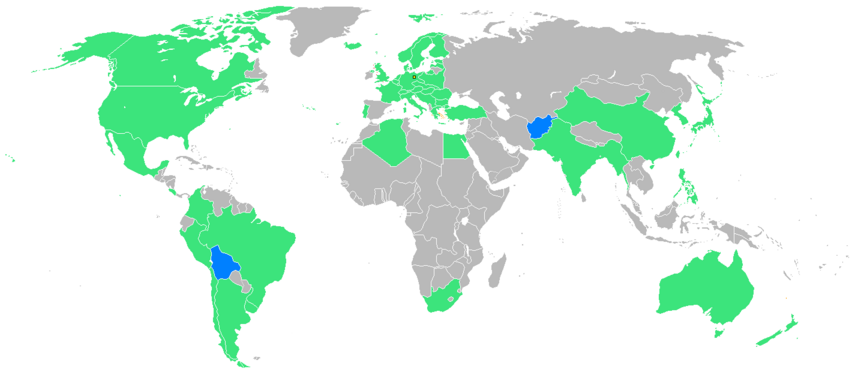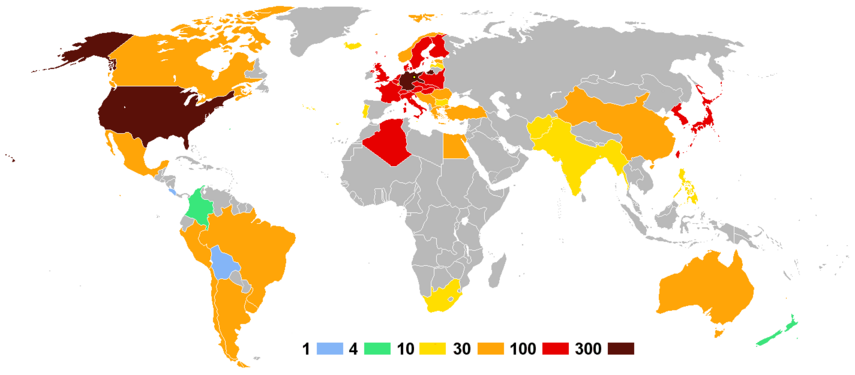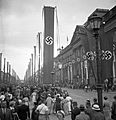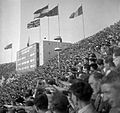1936 Summer Olympics facts for kids
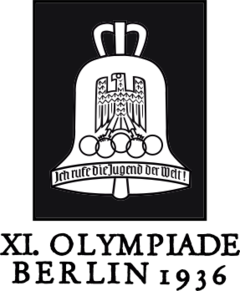
Emblem of the 1936 Summer Olympics
|
|||
| Host city | Berlin, Germany | ||
|---|---|---|---|
| Motto | I Call the Youth of the World! (German: Ich rufe die Jugend der Welt!) |
||
| Nations | 49 | ||
| Athletes | 3,963 (3,632 men, 331 women) | ||
| Events | 129 in 19 sports (25 disciplines) | ||
| Opening | 1 August 1936 | ||
| Closing | 16 August 1936 | ||
| Opened by | |||
| Cauldron |
Fritz Schilgen
|
||
| Stadium | Olympiastadion | ||
| Summer | |||
|
|||
| Winter | |||
|
|||
The 1936 Summer Olympics, also known as the Games of the XI Olympiad, took place in Berlin, Germany, from August 1 to August 16, 1936. Berlin was chosen to host the Games in 1931, beating Barcelona. This was the last time the International Olympic Committee voted for a host city in a city that was also bidding. Rules were later changed to prevent this.
To make these Games bigger than the 1932 Los Angeles Games, Adolf Hitler had a huge new stadium built. It could hold 100,000 people. Six gymnasiums and other smaller sports areas were also constructed. These Olympics were the first to be shown on television. Radio broadcasts reached 41 countries around the world.
A famous filmmaker named Leni Riefenstahl was hired to make a movie about the Games. Her film, Olympia, used many new filming techniques. These techniques are still common in sports movies today.
Hitler saw the 1936 Games as a chance to promote his government's ideas. He wanted to show off his beliefs about racial supremacy. The official Nazi Party newspaper said that Jewish people should not be allowed to compete. German Jewish athletes were stopped from taking part. Some Jewish swimmers from Austria did participate. Jewish athletes from other countries were sometimes not chosen to avoid upsetting the Nazi government.
The Games made a profit of over one million German marks from ticket sales. However, the city of Berlin and the German government spent a lot more money. The government's exact spending was not made public.
Jesse Owens from the United States was a huge star. He won four gold medals in running and long jump events. He became the most successful athlete at the Berlin Games. Germany won the most medals overall, with 101. The United States came in second with 57 medals. These were the last Olympic Games before World War II. The war stopped the Olympics for 12 years. The next Games were held in 1948.
Contents
Choosing the Host City
In 1930, 14 cities wanted to host the 1936 Summer Olympic Games. This was the first time that members of the International Olympic Committee (IOC) voted for their favorite host cities.
The final vote happened on April 26, 1931, in Barcelona, Spain. This was two years before Adolf Hitler and the Nazi Party came to power in Germany. Only Barcelona and Berlin were left in the running. Rome had pulled out just before the vote.
Other cities that wanted to host but later withdrew included Alexandria, Budapest, Buenos Aires, Cologne, Dublin, Frankfurt, Helsinki, Lausanne, Montevideo, Nuremberg, Rio de Janeiro, and Rome. Some of these cities, like Helsinki and Rome, later hosted the Olympics.
This was only the second time the IOC voted for a host city in a city that was also bidding. The first time was in Paris in 1894. There, Athens and Paris were chosen for the first modern Olympics.
Barcelona held a sports festival during the IOC meeting. But political uncertainty in Spain likely affected the vote. Berlin won the right to host the Games.
After the Nazis took control of Germany, they started anti-Jewish policies. The IOC talked about changing the host city. But Hitler's government promised that Jewish athletes could compete for Germany. One year before the Games, the American Olympic Association suggested moving the Games to Rome.
| City | Country | Round 1 |
|---|---|---|
| Berlin | 43 | |
| Barcelona | 16 | |
| Abstentions | 8 | |
| Withdrawn bids | ||
| Alexandria | 0 | |
| Budapest | 0 | |
| Buenos Aires | 0 | |
| Cologne | 0 | |
| Dublin | 0 | |
| Frankfurt | 0 | |
| Helsinki | 0 | |
| Lausanne | 0 | |
| Montevideo | 0 | |
| Nuremberg | 0 | |
| Rio de Janeiro | 0 | |
| Rome | 0 | |
Organizing the Games
Hans von Tschammer und Osten was in charge of sports in Germany. He played a big part in organizing the Olympics. He believed that sports could make German youth stronger and more united. He also thought sports could help remove people he considered "undesirable."
Von Tschammer asked Theodor Lewald and Carl Diem to handle the details. Diem had the idea to start the Olympic torch relay. This would carry the flame from Greece to the host nation.
The Olympic Torch Relay
The 1936 Games were the first to have an Olympic torch relay. This relay carried the flame from Greece all the way to Berlin. Leni Riefenstahl filmed this relay for her movie Olympia.
Adolf Hitler commented on the Games, saying:
The sportive, knightly battle awakens the best human characteristics. It doesn't separate, but unites the combatants in understanding and respect. It also helps to connect the countries in the spirit of peace. That's why the Olympic Flame should never die.
Broadcasting the Games
These Games were the first to be shown live on black-and-white television. The German Post Office broadcast over 70 hours of coverage. People could watch in special viewing rooms in Berlin and Potsdam. A few people with private TV sets could also watch. The Games were also filmed in color for the first time, using a new technology called Agfacolor.
The Olympic Village
The 1936 Olympic village was in Elstal, near Berlin. It was about 30 kilometers from the city center. The village had dorms, a large dining hall, a swimming pool, and training areas. It was designed by Wolfgang Fürstner.
Just before the Games, Fürstner was removed from his role. He was partly Jewish, and new laws meant he could not serve in the military. The village was later used by the German army. After World War II, the Soviet Union took it over. Today, parts of the village are being restored to become a living museum. The dorm where Jesse Owens stayed has been fully restored.
-
LZ 129 Hindenburg flying over the village, with the Olympics logo painted on its underside hull
Olympic Venues
Twenty-two different places were used for the 1936 Summer Olympics. Many of them were in the Reich Sportsfeld complex.
Sailing events took place in the Bay of Kiel. This same bay was used for sailing in the 1972 Summer Olympics in Munich. The main Olympic Stadium was used for many events. It later hosted parts of two FIFA World Cups. It was also renovated in the early 2000s.
The Avus Motor Road was a race track that was rebuilt for the Games. It was used for athletics and cycling. The Deutschlandhalle was a large indoor arena used for boxing, weightlifting, and wrestling. It was damaged in World War II but later rebuilt.
Basketball games were held outdoors, as requested by the International Basketball Federation. The tennis courts became muddy during heavy rain. The canoeing final was also affected by a thunderstorm.
The Olympic Stadium was used as an underground shelter during World War II. After the war, the British reopened it. It was renovated again from 2000 to 2004. Today, it can hold over 74,000 people. It is home to the Hertha BSC football team. The stadium also hosted the final of the 2006 FIFA World Cup.
| Venue | Sports | Capacity | Ref. |
|---|---|---|---|
| Avus Motor Road | Athletics (marathon, 50 km walk), Cycling (road) | Not listed | |
| BSV Field | Cycling (track), Handball | 1,000 | |
| Dietrich Eckart Open-Air Theatre | Gymnastics | 20,000 | |
| Döberitz | Equestrian (eventing), Modern pentathlon (riding) | Not listed | |
| Deutschlandhalle | Boxing, Weightlifting, Wrestling | 8,630 | |
| Berlin-Grünau Regatta Course | Canoeing, Rowing | 19,000 | |
| Haus des Deutschen Sports | Fencing, Modern pentathlon (fencing) | 1200 | |
| Hertha BSC Field | Football | 35,239 | |
| Hockeystadion | Field hockey | 18,000 | |
| Hockeystadion#2 | Field hockey | 1600 | |
| Kiel Bay | Sailing | Not listed | |
| Mayfield | Equestrian (dressage), Polo | 75,000 | |
| Mommsenstadion | Football | 15,005 | |
| Olympic Stadium | Athletics, Equestrian (jumping), Football (final), Handball (final) | 100,000 | |
| Olympic Swimming Stadium | Diving, Modern pentathlon (swimming), Swimming, Water polo | 20,000 | |
| Police Stadium | Handball | Not listed | |
| Poststadion | Football | 45,000 | |
| Ruhleben | Modern pentathlon (shooting) | Not listed | |
| Tennis Courts | Basketball, Fencing (épée) | 832 | |
| Tennis Stadium | Basketball | Not listed | |
| Wannsee Golf Course | Modern pentathlon (running) | Not listed | |
| Wannsee Shooting Range | Shooting | Not listed |
The Games Begin
Opening Ceremony Highlights
The opening ceremony was held at the Berlin Olympic Stadium on August 1, 1936. A German airship, the Hindenburg, flew over the stadium carrying the Olympic flag.
After Hitler arrived, the parade of nations began. Each country had its own special uniform. Greece, as the birthplace of the Olympics, entered first. Germany, the host nation, entered last. Some athletes gave the Nazi salute as they passed Hitler. Others gave the Olympic salute or a different gesture. Most nations lowered their flags as they passed Hitler. The United States, United Kingdom, Switzerland, and the Philippines did not.
After a speech, Adolf Hitler officially opened the Games. He used a specific sentence given to him by the IOC. This was to stop him from using the speech for propaganda.
The Olympic flame was first used in 1928. But the torch relay, where the flame is carried from ancient Olympia to the host city, started in 1936. A young man ran into the stadium with the torch. He ran up steps to light a cauldron. This flame would burn for the entire Games.
Something funny happened during the ceremony. American runner Louis Zamperini shared the story. He said 25,000 pigeons were released. Then a cannon fired, scaring the pigeons. They "pooped" all over the athletes wearing straw hats. The women were especially unlucky, as it got in their hair!
Sports and Events
There were 129 events in 25 different areas of 19 sports.
- Aquatics
- Diving (4)
- Swimming (11)
- Water polo (1)
- Athletics (29)
- Basketball (1)
- Boxing (8)
- Canoeing (9)
- Cycling
- Road (2)
- Track (4)
- Equestrian
- Dressage (2)
- Eventing (2)
- Show jumping (2)
- Fencing (7)
- Field hockey (1)
- Football (1)
- Gymnastics (9)
- Handball (1)
- Modern pentathlon (1)
- Polo (1)
- Rowing (7)
- Sailing (4)
- Shooting (3)
- Weightlifting (5)
- Wrestling
- Freestyle (7)
- Greco-Roman (7)
Basketball, canoeing, and handball were new to the Olympics. Handball did not return until the 1972 Munich Games. There were also two demonstration sports: baseball and gliding. Art competitions were also held, and medals were given for climbing and aeronautics.
Teams from India and China also gave demonstrations of their traditional sports.
Amazing Achievements
Germany did very well in horse riding events. They won gold medals in all three disciplines, both individually and as a team. German gymnasts Konrad Frey and Alfred Schwarzmann each won three gold medals.
American Jesse Owens was a standout. He won four gold medals in sprinting and the long jump. His German competitor, Luz Long, even gave Owens advice during the long jump. Long was later honored for his sportsmanship. Mack Robinson, whose brother was Jackie Robinson, won silver in the 200-meter sprint.
Future war hero Louis Zamperini competed in the 5,000-meter race. He finished strong with a very fast final lap. In the 800-meter race, American John Woodruff won gold. He slowed down in the middle to get out of a crowded spot. Glenn Edgar Morris won gold in the decathlon.
British rower Jack Beresford won his fifth Olympic medal, his third gold. The U.S. eight-man rowing team from the University of Washington won gold. They came from behind to beat Germany and Italy, with Hitler watching. A 13-year-old American, Marjorie Gestring, won the women's 3-meter diving event.
Jack Lovelock from New Zealand won the 1500-meter gold medal. He set a new world record.
In the marathon, two Korean runners, Sohn Kee-chung and Nam Sung-yong, won gold and bronze. They ran for Japan because Korea was under Japanese rule at the time.
India won the gold medal in field hockey again. They beat Germany 8–1 in the final. This was not controversial, as Germans considered Indians to be of a similar background.
Rie Mastenbroek from the Netherlands won three gold medals and a silver in swimming. Estonian heavyweight wrestler Kristjan Palusalu won two gold medals. He was the first and only wrestler to win both Greco-Roman and freestyle heavyweight events. This was the last time Estonia competed as an independent nation until 1992.
Egyptian weightlifter Khadr El Touni won the middleweight class. He lifted much more than his competitors. Hitler was very impressed by El Touni's performance. He even ordered a street in Berlin's Olympic village to be named after him.
Italy's football team won the gold medal. This was between their two World Cup victories in 1934 and 1938. Supporters of Benito Mussolini's government saw this as proof of their system's strength. Austria won the silver medal. There was a controversy when Hitler called for a rematch of a quarterfinal game. Peru had beaten Austria 4–2. Peruvian fans reportedly ran onto the field. Peru refused to play again and left the Games in protest.
A remarkable story was the gold medal won by the US women's 4 × 100-meter relay team. The German team was favored but dropped the baton. A notable member of the US team was Betty Robinson. She was the first woman to win an Olympic track and field gold medal in 1928. In 1931, she was in a plane crash and was badly hurt. It was thought she was dead, but she was in a coma. It took her a long time to recover. She missed the 1932 Olympics but came back to win gold in 1936.
Participating Nations
A total of 49 nations took part in the Berlin Olympics. This was more than the 37 nations in 1932. Five countries made their first Olympic appearance: Afghanistan, Bermuda, Bolivia, Costa Rica, and Liechtenstein.
| Participating National Olympic Committees |
|---|
|
 Haiti, also took part in the Opening Ceremony, but its only athlete (a weightlifter) did not compete.
Haiti, also took part in the Opening Ceremony, but its only athlete (a weightlifter) did not compete.
Medal Count

Here are the twelve nations that won the most medals at the 1936 Games:
* Host nation (Germany)
| Rank | Nation | Gold | Silver | Bronze | Total |
|---|---|---|---|---|---|
| 1 | 38 | 31 | 32 | 101 | |
| 2 | 24 | 20 | 12 | 56 | |
| 3 | 10 | 1 | 5 | 16 | |
| 4 | 9 | 13 | 5 | 27 | |
| 5 | 8 | 6 | 6 | 20 | |
| 6 | 7 | 6 | 6 | 19 | |
| 7 | 6 | 5 | 10 | 21 | |
| 8 | 6 | 4 | 10 | 20 | |
| 9 | 6 | 4 | 7 | 17 | |
| 10 | 5 | 7 | 5 | 17 | |
| 11 | 4 | 7 | 3 | 14 | |
| 12 | 1 | 9 | 5 | 15 | |
| Totals (12 entries) | 124 | 113 | 106 | 343 | |
Last Surviving Competitor
After Joan Langdon passed away on March 15, 2022, Iris Cummings became the last living athlete who competed in the 1936 Summer Olympics.
Images for kids
-
Spectators giving the Nazi salute during one of the medal ceremonies as the Nazi flag flies above
See also
 In Spanish: Juegos Olímpicos de Berlín 1936 para niños
In Spanish: Juegos Olímpicos de Berlín 1936 para niños
- 1936 Winter Olympics
- Olympic Games celebrated in Germany
- 1936 Winter Olympics – Garmisch-Partenkirchen
- 1936 Summer Olympics – Berlin
- 1972 Summer Olympics – Munich
- List of IOC country codes
- Olympic Games Decoration
- Race (2016 film)
- National Socialist League of the Reich for Physical Exercise



